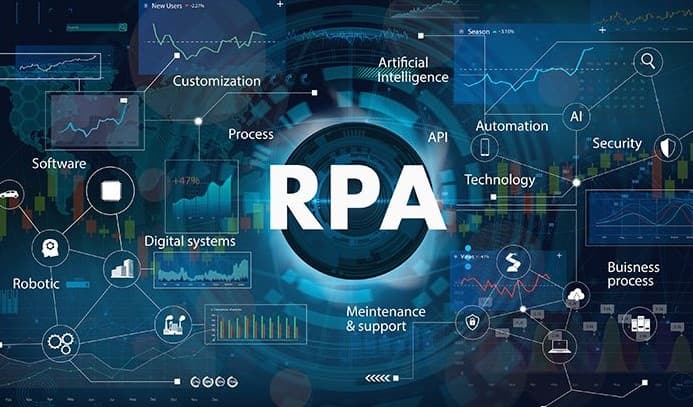Robotic Process Automation
Say Goodbye to Errors, Hello to Efficiency: RPA Solutions Tailored for You



RPA is a cutting-edge technology that empowers you with a virtual workforce of “software robots.” These tireless assistants can automate repetitive, rule-based tasks across various digital platforms, freeing your human employees to focus on more strategic initiatives. Imagine a tireless, digital assistant who flawlessly handles tasks like data entry, form filling, report generation, and more. That’s the power of RPA, and it’s ready to transform your business.
Experilabs delivers flawless RPA projects to its customers with its team of experts specialized in leading RPA solutions like UIPath and Automation Anywhere, and its extensive knowledge and experience in the field.
In today’s hyper-competitive landscape, businesses relentlessly pursue ways to supercharge efficiency, slash costs, and guarantee accuracy. This is where Robotic Process Automation (RPA) steps in as a game-changer.
Minimize human error by design. Software robots follow pre-defined rules, eliminating the possibility of mistakes in repetitive tasks, a common pitfall for human workers.

Supercharge Efficiency: Streamline workflows, automate repetitive tasks, and experience a surge in productivity.
Unwavering Accuracy: Eliminate human error and ensure consistent, reliable task execution every time.
Motivated Workforce: Free your employees from repetitive tasks, allowing them to focus on high-value activities that drive strategic initiatives.
RPA’s versatility transcends departmental boundaries, empowering a wide range of teams to achieve more. Here’s how:
Customer Service: Transform the customer experience by automating repetitive tasks like order processing, account management, and resolving inquiries. Free your agents to focus on complex issues and build stronger customer relationships.
Finance & Accounting: Streamline financial workflows and eliminate manual errors. Automate tasks like invoicing, expense reporting, and data reconciliation, ensuring accuracy and freeing up staff for strategic analysis.
Human Resources: Boost HR efficiency and employee satisfaction by automating onboarding tasks, payroll processing, and benefits administration. Your HR team can then dedicate their time to talent management and employee engagement initiatives.
Operations: Optimize logistics, supply chain management, and inventory control with RPA. Automate manual tasks to improve efficiency, reduce errors, and gain real-time visibility into your operations.

-Data entry and extraction
-Invoice processing
-Reporting
-Email management
-Customer service responses
-Inventory tracking
By automating these tasks with RPA, you can:
Eliminate human errors: Data entry errors and inconsistencies are reduced. Increase efficiency: Achieve faster and more consistent workflows. Reduce costs: Save time and resources previously spent on manual processes.
-Order processing
-Customer inquiries
-Payroll processing
-Inventory tracking
-Invoicing
By automating these tasks with RPA, you can:
Boost employee morale: Freeing employees from repetitive tasks allows them to focus on more creative and strategic work. Save time: Gain more time through a faster workflow and increased efficiency. Increase capacity: Manage a higher volume of work with your existing workforce.
-Customer database updates
-Data transfer between different systems
-Integration and data synchronization
-Reporting and analytics
By automating these tasks with RPA, you can:
Streamline workflows: Ensure smooth and consistent data flow between different systems. Speed up processes: Eliminate the need for manual data transfer and integration. Enhance data consistency: Maintain consistent and up-to-date data across various systems.
With the power of RPA, you can optimize your business processes, increase efficiency and productivity, and save time and money.
Note: The above list is just a sample. There are many different types of tasks that can be automated with RPA.